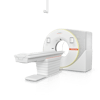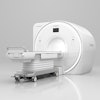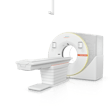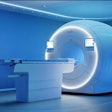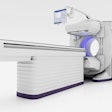Wednesday, November 29 | 9:10 a.m.-9:20 a.m. | RC513-04 | Room E352
In this Wednesday morning session, researchers from Spain will describe their efforts to find a better way to calculate the weight and gestational age of critically ill newborns based on anteroposterior chest x-rays.Radiologists are often required to report on initial chest x-rays of newborns without clinical information such as their age and weight. Being able to make a rapid estimation of these demographic factors could contribute to a more accurate diagnosis, according to researchers from the Autonomous University of Barcelona.
"We realized the widespread lack of basic clinical information (for instance, gestational age or weight data) while reporting chest plain films in critically ill newborns," presenter Dr. Joan Albert Prat told AuntMinnie.com. "We also realized how this lack of information made it more difficult for us to suggest an accurate diagnosis."
Study co-author Joaquim Piqueras, PhD, hypothesized that infants with a chest length of less than 45 mm were very premature; the team decided to test this theory by studying 376 plain chest films of 284 newborns admitted to Vall d'Hebron University Hospital in Barcelona between September 2014 and September 2015.
The group acquired three simple measures from the x-ray studies:
- Dorsal spine length: a straight line from the superior rim of D1 to the lower rim of D12
- Right pulmonary length: from the right pulmonary apex to the center of the right diaphragmatic dome
- Transversal chest width: between the outer margins of the ribs at the maximum transverse diameter (ninth rib)
The researchers also collected data on other relevant variables, such as weight, assessed prematurity, and maternal complications.
They found that several data values derived from the chest x-rays performed best in enabling the assessment of newborn age and weight:
- A dorsal spine length of 90 mm can be used to differentiate preterm from term and post-term newborns.
- The triple combination of dorsal spine length of 80 mm, right pulmonary length of 47 mm, and transverse chest width of 93 mm can differentiate extremely and very preterm infants from late-preterm and term newborns.
Using the measures can help radiologists determine the age and weight of critically ill newborns based on plain x-ray films, without requiring clinical information from clinicians, the researchers concluded. They have begun using the technique in their hospital.
"This will allow radiologists to suspect one group of pathologies/complications or another depending on the gestational age (extremely preterm, very, or late-preterm newborns)," Prat said.
